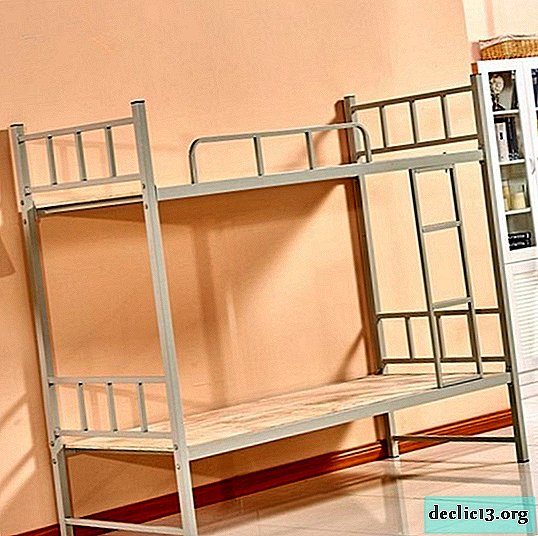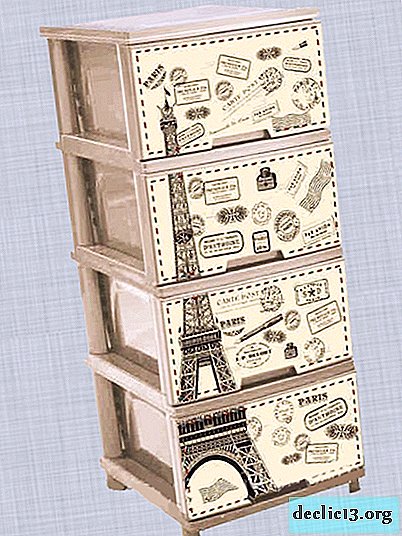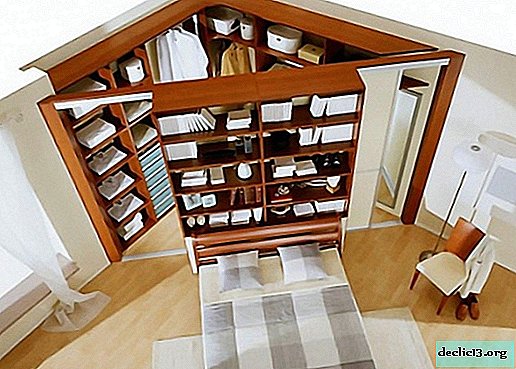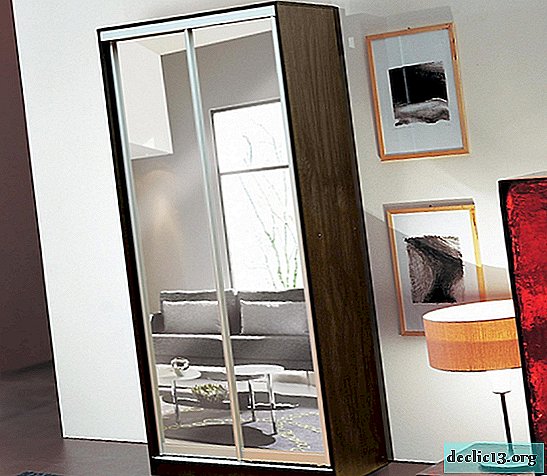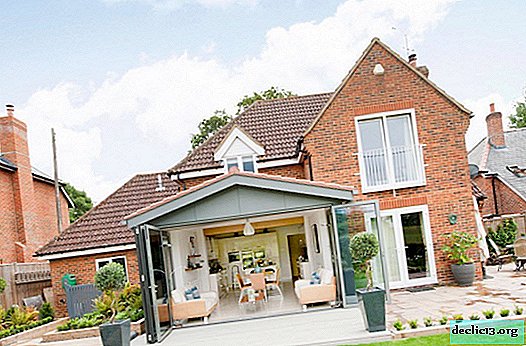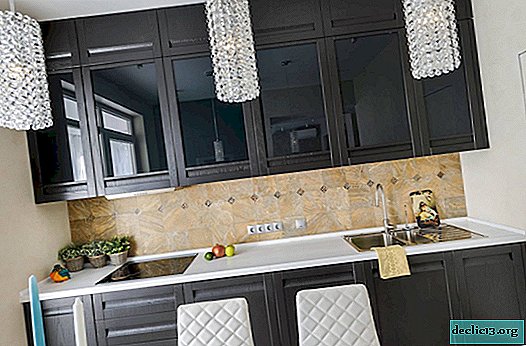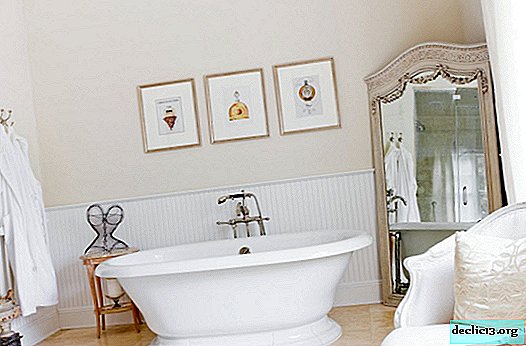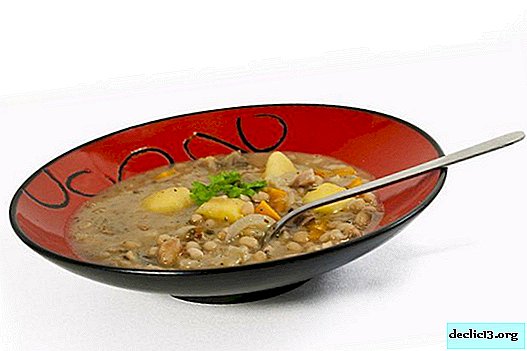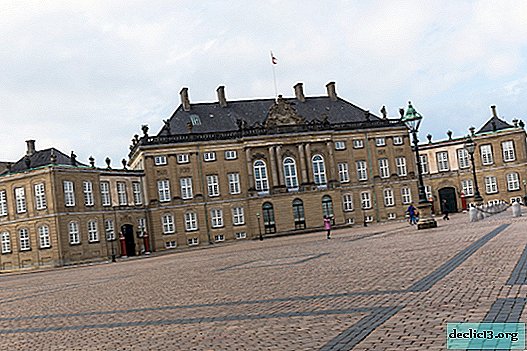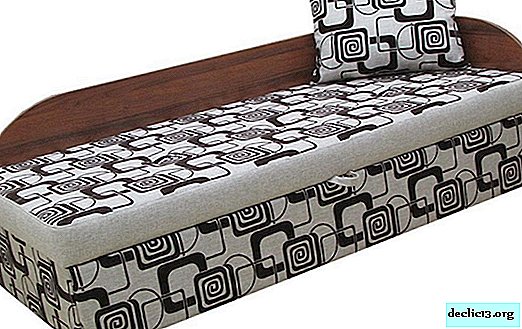Laminate in the interior - practical and aesthetic flooring
At the end of the seventies of the last century, specialists from a Swedish company developed a technology for manufacturing a laminate. Subsequently, this process underwent significant changes. The most significant changes in the manufacturing process were brought in by German specialists, who developed the technology for forming the panel, which is used today. Also, Belgian specialists managed to make a significant contribution to the laminate production - they came up with a glueless castle compound. It was with the advent of the castle as a connecting element for laminated tiles that brought this type of flooring into widespread sale, both for commercial and residential premises.
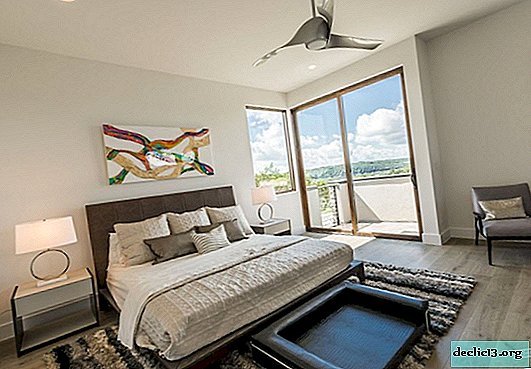
Currently, the stores offer a wide range of laminate flooring of various quality, color palette, textured solutions, designed for rooms with different characteristics. Depending on the manufacturer and the quality of the flooring, the price range also represents a wide range of options for the homeowner with different budget sizes.

The composition and structure of the laminate
Laminate is an artificial multilayer coating, the structure of which consists of four layers:
- the top protective layer consists of high-strength acrylic or melamine resin. Complex composite materials provide a high level of protection of the decorative layer from abrasion, mechanical damage, moisture, ultraviolet radiation and other types of damage. Often, to increase the strength characteristics of this layer, manufacturers use electron beams. The layer thickness does not exceed 0.6 mm;
- a decorative layer of paper or furniture foil, imitating, as a rule, wood (sometimes leather, natural stone). The range of options for the decorative layer is growing all the time, manufacturers are constantly looking for original design solutions;
- the main layer of a high density plate - particleboard or fiberboard, MDF. It is the characteristics of this layer that mainly determine the quality of the lamin - its strength, moisture resistance, resistance to abrasion, high loads and mechanical damage. The layer is responsible for sound insulation, thermal insulation and the quality of the castle joints. The thickness of this layer ranges from 5 to 12 mm;
- waterproof layer - paper impregnated with water-repellent substances.

As a result of compression under high pressure and at high temperature, all layers are combined into one laminated panel. Depending on the materials used in the production of the laminate, its level of quality is formed, and hence the cost. Each of the layers is responsible for certain functional responsibilities of the product and forms the characteristics of the finished product.

Types and classes of laminate - application features
In any home there are rooms with different loads on the floor. Obviously, in rooms such as the living room, hallway or dining room, the load on the flooring is much stronger than in the bedroom, for example. Based on the level of these loads, the entire laminate is divided into classes - the number in the marking, where the first digit is two for residential premises, and three for commercial. The second figure indicates the recommended intensity of patency of the room in which this flooring will be used:
- low passability is mainly characteristic of bedrooms, guest rooms, hotel rooms;
- average passability, typical for living rooms, dining rooms, offices and in the case of commercial premises - for small shops
- high passability in residential buildings is characteristic of hallways and some living rooms, within which there is a dining room and kitchen, for commercial spaces - these are waiting rooms;
- increased cross-country ability occurs mainly in commercial premises (supermarkets, hotel lounges, office buildings).


Consider the most common laminate classes on sale:
- Grade 21 - a service life of about 4 years. The demand for laminate with this class is low, it can only be used in rooms with very low traffic;
- 22nd class - bedrooms, children's rooms, some living rooms (service life no more than 4 years);
- 23rd class - the service life is the same, suitable for rooms with high traffic, heavy furniture;
- Grade 31 - a laminate for commercial premises, which is used in residential spaces, extending its service life to 8 years;
- 32 class - has even greater strength characteristics, when used for flooring of living rooms, it can last up to 12 years;
- Grade 33 - the highest level of wear resistance, is used for walk-through rooms, the service life can be up to 15 years.

Recently, classes 21 to 23 have almost completely disappeared from the assortment of stores. The most widespread classes are 32 and 33, as the most wear-resistant and durable. If you meet a laminate labeling of more than 33, then you will know that this is nothing more than an advertising stunt of manufacturers. In any case, it is always better to require a quality certificate from store consultants.

In addition to wear resistance and strength, an important indicator of a laminate is its thickness. Recommended hollow ranges from 8 to 12 mm. The thicker the laminate, the easier it is to lay it, its sound-proofing properties grow with an increase in thickness.

The laminate also differs in the way the panels are connected:
- with glue connection - when connecting parts, a tight, almost imperceptible seam without gaps is obtained. This type of laminate is cheaper. But self-assembly is extremely difficult. If you need to replace one panel, you will have to change the entire coating. Due to these features, adhesive bonded laminate is not the most popular flooring option these days;
- with lock connection - without the use of glue, the laminate is fixed with special locks.
Features of flooring in the form of laminate panels
In the manufacture of the first laminate collections, manufacturers tried to create an imitation of parquet flooring. Gradually, the idea of laying a laminate as a piece of parquet has become obsolete and now the appearance of the flooring can mimic various types of wood, ceramics, stone tiles. In terms of its performance, the laminate is not similar to parquet, nor to another popular type of flooring - linoleum.

Despite the fact that the thickest layer in the laminate panel is represented by recycled wood, it is not necessary to say that this is a natural material. The fact is that artificial layers are responsible for the decor and operational properties of the material, which make it possible to give the product not only various technological qualities, but also a diverse appearance. Currently, there are a large number of collections in wide sale from various manufacturers, with materials endowed with different properties - someone focuses on moisture resistance, others try to achieve the maximum identity of the appearance of the laminate to natural wood.

Each manufacturer in the highly competitive laminate sales market is trying to give its collections unique properties, to stand out in the total mass of material. Nevertheless, it is possible to highlight a number of properties that are inherent in all types of laminate panels:
- high wear resistance;
- moisture resistance;
- resistance to hit a lit cigarette;
- resistance to scratches and dents resulting from mechanical stress;
- antistatic properties of the upper layer, which can resist the appearance of a thick layer of dust;
- ease of installation;
- simple care that does not require the use of special cleaners;
- the ability to combine with a system of warm floors;
- hypoallergenic composition of the top coating;
- great appearance.

A few simple tips when choosing a laminate flooring:
- choose a class of laminate according to the intensity of movement in the room;
- if heavy furniture will be installed in the room, it is important to choose the material with the maximum possible panel thickness;
- the color of the laminate should be combined with the decoration and furniture of the room - if all surfaces are decorated in dark colors, then the image of the room will be depressing and, on the contrary, a completely bright space can cause unpleasant associations with the hospital room;
- it is better not to lay the laminate with the V-shaped border in rooms where cleaning will be rare;
- a diagonal laminate visually expands the space, but the consumption of the material itself with this arrangement increases.

Laminate in the interiors of rooms of various functional
Bedroom
In the bedroom, the flooring is not subjected to constant mechanical stress, but at the same time it must withstand a sufficiently large weight of the central piece of furniture - the bed. Therefore, it makes sense to choose a laminate with a large thickness of panels, but a middle class of abrasion for rooms with medium traffic.


The bedroom looks very organic, if the laminate imitates the type of wood that was used to make the bed and additional furniture - bedside tables or stand tables.

The same applies to the use of combinatorics between flooring and ceiling design using wooden beams, ceilings or other structures.

If the interior of the bedroom uses a dark, almost black color for the execution of some design objects, then the dark floor will be harmoniously integrated into the overall image of the room.

For a snow-white bedroom, the bright natural shade of the flooring can be the only color accent that added a little natural warmth to the interior.

Living-dining room
The color combination of the laminate and the material used to make the ceiling beams creates an incredibly harmonious appearance for the living room. Obviously, such dark and bright colors and textures are suitable for rooms with large windows and plenty of natural light.

Light wood looks no less spectacular as a ceiling lining and a similar imitation of natural material on the floor of a spacious room.


If the living room is a room in which there are several functional areas, including the dining room, it is important to find the color and pattern of the laminate, which effectively unites the entire space. A light flooring is not only a good color solution, but also a practical approach in terms of regular cleaning of the room. Dust is almost invisible on a light surface.




The technological properties of the laminate allow you to lay it even in areas with high humidity and temperature extremes, such as the kitchen. If your living room is combined with a kitchen area, you can lay a common floor covering to create a single image of the room, without worrying about the impact on the material of moisture, high traffic and mechanical damage.

Using the dark color of the flooring and light tones for finishing walls and ceilings, we manage to achieve a visual expansion of the space, which is very important for small rooms in apartment buildings.



The color of wenge in the flooring looks very impressive, especially in the interior with contrasting color schemes. The shade of the flooring goes well with window frames, ceiling beams and some pieces of furniture. But it is important to understand that such a color of the floors will require you to clean it more thoroughly and often - dust can be seen very well on dark surfaces.


Another example of the spectacular use of dark, almost black colored flooring in a contrasting interior. In rooms with such dark design elements, it is important not to overdo it and provide an adequate level of lighting, both natural and artificial.

Wide strips that mimic the floorboard give a visual extension to the space, the floors seem larger than they really are. And with the help of an original natural wood pattern, you can bring into the interior of the room not only notes of natural warmth, but also a unique design solution.

For the living room interior, made mainly in a cold palette of colors or using neutral tones, such as all shades of gray, a floor covering with a bright pattern and warm colors can be the highlight of the interior.


For snow-white rooms, the use of a warm palette of wood imitation can also be a saving element, which allows not only to diversify the color scheme of the space, but also to bring in the natural warmth that is so necessary for creating coziness.


In living rooms, where furniture is used as a color accent, and the decoration should only create a neutral background for focal elements, a light laminate will be most welcome.


Laminate, in the drawing of which several color combinations are used, will look incredibly harmonious in the interior, in the design of which these shades have already been applied. With sufficient natural light, all the nuances of color solutions will be clearly visible, and the interior will amaze with its balance, combinatorics, originality.


Laminate is a fairly versatile floor covering that will look harmoniously in almost any interior style, it is only important to choose the appropriate pattern and color palette of the material. In a loft-style living room, laminate flooring is also relevant, as in a room decorated in a classic style.

The modern laminate is able to imitate any surface. For example, to create an interior in the style of shabby chic, vintage, Provence or country, you can use laminate panels with a seemingly aged surface, where on the “wooden boards” there are chinks and chips, or cracked paint.

Kitchen
In the contrasting interior of the kitchen, where black and white combinations are used very actively, a light laminate will be most relevant. Such a coating will not attract attention, but will become only a functional background for a dynamic combination of light and dark design elements.

The same goes for kitchens with very bright furniture, where the floor covering should only act as a neutral background.

In the kitchen space, where the facades of the cabinets are presented using a bright natural wood pattern, it is better to choose a neutral color scheme for flooring - muted tones and softly pronounced texture will be more appropriate.

If you decide to lay the laminate on a diagonal, but have not previously had such an experience in flooring, it is better to seek help from specialists. The styling itself will not require special skills, but it is important to correctly calculate the amount of finishing material. The shades of the same de laminate model may differ in different batches, so it is important to immediately get the right amount of panels.

One of the options for flooring in the kitchen space is a combination of ceramic or stone tiles with the use of laminate panels. In the area of work surfaces with the highest level of humidity and the probability of temperature changes, tiles are laid, the rest of the floors are covered with a laminate.A wide range of color and textured options for laminated panels will allow you to find a harmonious combination with material from ceramics, natural or artificial stone.

Further, several color and texture solutions for the decorative layer of the laminate, in relation to various stylistic options for the kitchen space.






